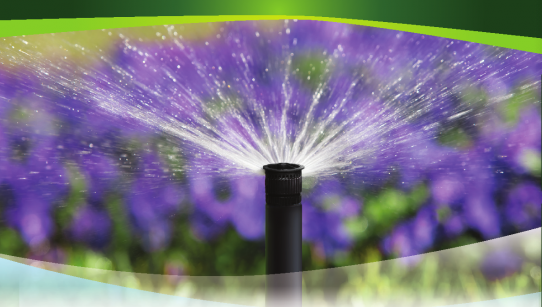The Impact of Soil Properties on Plant Growth
The Impact of Soil Properties on Plant Growth
The impact of soil properties on plant growth cannot be
overstated. Soil is the foundation for plant growth and development, and its
physical, chemical and biological properties all play a critical role in plant
growth and productivity. In this blog, we will explore how soil properties
affect plant growth and why understanding soil properties is essential for
successful agriculture.
Physical
Properties of Soil
Soil is a complex,
dynamic, and living system that plays an essential role in sustaining life on our
planet. It is a mixture of mineral particles, organic matter, water, air, and
living organisms. Soil physical properties refer to the characteristics of soil
that are related to its physical structure, texture, and composition.
Texture
Soil texture refers
to the size distribution of mineral particles in the soil. The three main types
of soil texture are sand, silt, and clay. Sand particles are the largest and
range in size from 0.05 to 2 mm. Silt particles are smaller, ranging in size
from 0.002 to 0.05 mm. Clay particles are the smallest, measuring less than
0.002 mm. Soil texture affects the soil's ability to hold water and nutrients,
as well as its workability and susceptibility to erosion.
Structure
Soil structure
refers to the arrangement of soil particles and the spaces between them. Soil
can have a granular, blocky, prismatic, or platy structure, among others. A
good soil structure promotes good soil aeration, water infiltration and
drainage, and root growth.
Porosity
Soil porosity is
the amount of pore space in the soil. Pores are the spaces between soil
particles that allow for the movement of air and water. Porosity affects the
soil's ability to store and transmit water, nutrients, and gases, as well as
the soil's strength and stability.
Bulk density
Bulk density is the
mass of dry soil per unit volume, including the spaces between soil particles.
A high bulk density means the soil is compacted and has less pore space, which
can limit plant growth and water infiltration.
Water holding
capacity
The water-holding
capacity of soil refers to the amount of water that the soil can hold and make
available to plants. Soil texture, structure, and porosity all affect the water-holding
capacity of the soil. Sandy soils have a low water-holding capacity, while clay
soils have a high water-holding capacity.
Soil color
Soil color can
provide information about the soil's composition, drainage, and organic matter
content. Dark soils indicate high organic matter content, while red and yellow
soils may indicate the presence of iron and aluminium oxides.
understanding the physical properties of soil is crucial for
determining soil quality and suitability for various uses. These properties
affect the soil's ability to hold water and nutrients, support plant growth,
and resist erosion. By analyzing these physical properties, we can improve soil
management and promote sustainable agriculture and land use practices.
Chemical
properties of soil
Oil is a complex
mixture of organic and inorganic materials that vary in their chemical
properties. These properties play a crucial role in determining soil quality
and suitability for different agricultural, environmental, and engineering
purposes. Understanding the chemical properties of soil is essential for making
informed decisions about land use and management.
pH
Soil pH is a
measure of the soil's acidity or alkalinity. The pH scale ranges from 0 to 14,
with 7 being neutral, values below 7 indicating acidity, and values above 7
indicating alkalinity. The optimal pH range for most plants is between 6.0 and
7.5. Soil pH affects nutrient availability, microbial activity, and plant
growth. Some plants prefer acidic soil, while others prefer alkaline soil.
Cation exchange
capacity
The cation exchange
capacity (CEC) of soil is a measure of the soil's ability to retain positively
charged ions, such as calcium, magnesium, potassium, and sodium. These ions are
essential for plant growth, and their availability in the soil can affect crop
yields. Soils with a high CEC can hold more nutrients and are less susceptible
to leaching.
Organic matter
content
The organic matter
content of the soil is a measure of the amount of plant and animal material in the
soil. Organic matter is important for soil fertility, as it provides nutrients
for plant growth and helps to retain water. The decomposition of organic matter
also releases carbon dioxide and other gases, which can affect the soil's pH.
Nutrient content
Soil nutrient
content is essential for plant growth and crop yields. Nutrients are classified
as macronutrients, such as nitrogen, phosphorus, and potassium, and
micronutrients, such as iron, zinc, and copper. The availability of these
nutrients in the soil can vary depending on the soil type, pH, and organic
matter content.
Salinity
Soil salinity
refers to the concentration of salt in the soil. Saline soils can affect plant
growth and yield by limiting water uptake and increasing osmotic stress. The
salinity of soil can be affected by irrigation practices, soil type, and
climate.
Biological
properties of soil
Soil is a complex
and dynamic ecosystem, home to a vast array of living organisms, from bacteria
and fungi to earthworms and insects. These organisms play critical roles in
soil health, nutrient cycling, and the overall functioning of ecosystems.
Understanding the biological properties of soil is essential for maintaining
soil fertility, promoting sustainable agriculture, and preserving natural
ecosystems. In this blog, we will explore some of the essential biological
properties of soil and their importance.
Soil
Microorganisms
Soil microorganisms
are a critical component of the soil ecosystem. They include bacteria, fungi,
and protozoa, which play essential roles in nutrient cycling and decomposition.
Microbes can break down complex organic matter, releasing nutrients for plant
uptake. They can also form beneficial relationships with plants, such as
mycorrhizal fungi, which aid in nutrient uptake and increase plant tolerance to
stress.
Soil Fauna
Soil fauna, such as
earthworms, beetles, and nematodes, are essential in nutrient cycling,
decomposition, and soil structure. They improve soil structure by creating
burrows and tunnels that increase soil aeration and water infiltration. They
also break down organic matter, releasing nutrients for plant uptake.
Earthworms, in particular, are known to increase soil fertility by breaking
down organic matter and improving soil structure.
Soil Organic
Matter
Soil organic matter
(SOM) is the dead and decaying plant and animal material in the soil. SOM
provides a source of nutrients for microorganisms, which break it down into
simpler forms that can be taken up by plants. It also helps to improve soil
structure, water retention, and aeration. SOM is a critical component of
healthy soils and is essential for maintaining soil fertility.
Soil
Biodiversity
Soil biodiversity
refers to the variety of living organisms in the soil. A diverse soil ecosystem
is essential for maintaining soil health and ecosystem functioning. Different
soil organisms have different roles in nutrient cycling and decomposition, and
a diverse soil ecosystem ensures that all these roles are being fulfilled. Soil
biodiversity is also important for resilience, as a diverse soil ecosystem is
more resistant to environmental stressors such as drought and disease.
Soil Respiration
Soil respiration is
the process by which microorganisms break down organic matter and release
carbon dioxide into the atmosphere. This process is critical for maintaining
soil health and carbon cycling. High levels of soil respiration can indicate
high levels of microbial activity, which is essential for maintaining soil
fertility.
Understanding soil properties is essential for successful
agriculture. Farmers need to understand the properties of their soil to make
informed decisions about fertilization, irrigation, and other practices that
can affect plant growth. By understanding the impact of soil properties on
plant growth, farmers can make informed decisions to optimize plant
productivity and protect the health of their soil. Soil properties
are critical to plant growth and productivity. Soil physical properties, such
as texture and structure, influence water and nutrient availability, while
chemical properties, such as soil pH and cation exchange capacity, affect
nutrient availability. Soil biology plays a critical role in nutrient cycling
and soil health. Understanding these properties is essential for successful
agriculture and sustainable use of soil resources.







.png)




No comments yet